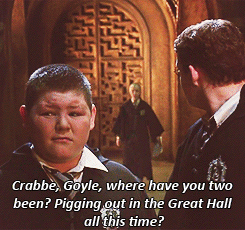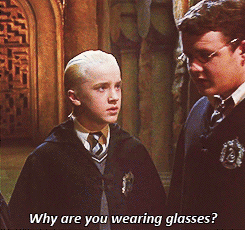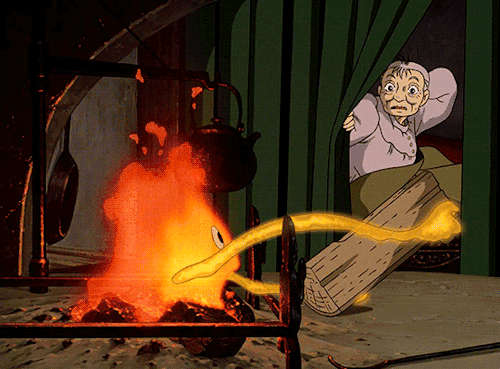This Supercapacitor Battery Can Be Recharged 30,000 Times
This supercapacitor battery can be recharged 30,000 times

A thin, flexible supercapacitor boasts high energy and power densities. Credit: University of Central Florida
Everyone and anyone with a smartphone know it is not long before your phone holds a charge for less and less time as the battery begins to degrade. But new research by scientists at the NanoScience Technology Center at the University of Central Florida (UCF), USA, could change that. The team have developed a new method for producing flexible supercapacitors that can store greater amounts of energy and can be recharged over 30,000 times without degradation. This new method could transform technology such as electric vehicles and mobile phones in the future.
‘If you were to replace the batteries with these supercapacitors, you could charge your mobile phone in a few seconds and you wouldn’t need to charge it again for over a week,’ said University of Central Florida researcher Nitin Choudhary.
The UCF team has attempted to apply newly discovered 2D materials that measure just a few atoms thick to supercapacitors. Other scientists have also tried formulations with other 2D materials including graphene, but had only limited success. The new supercapacitors are composed of millions of nanometre-thick wires coated with shells of 2D materials. The core facilitates the super-fast charging and discharging that makes supercapacitors powerful, and the 2D coating delivers the energy storage ability.
‘We developed a simple chemical synthesis approach so we can very nicely integrate the existing materials with the two-dimensional materials,’ said Yeonwoong Eric Jung, assistant professor of the study. Jung is working with UCF’s Office of Technology Transfer to patent the new process. ‘It’s not ready for commercialisation,’ Jung said. ‘But this is a proof-of-concept demonstration, and our studies show there are very high impacts for many technologies.’
More Posts from Smparticle2 and Others

Earlier this year, The Lutetium Project explored how microfluidic circuits are made, and now they are back with the conclusion of their microfluidic adventures. This video explores how microfluidic chips are used and how microscale fluid dynamics relates to other topics in the field. Because these techniques allow researchers very fine control over droplets, there are many chemical and biological possibilities for microfluidic experiments, some of which are shown in the video. Microfluidics in medicine are also already more common than you may think. For example, test strips used by diabetic patients to measure their blood glucose levels are microfluidic circuits! (Video and image credit: The Lutetium Project; submitted by Guillaume D.)










For her performance in Gone with the Wind (1939), Hattie McDaniel won a Best Supporting Actress Oscar on February 29, 1940. She was the first African American to win an Academy Award.
Cool! Go theoretical -and experimental-physics!

Heating up exotic topological insulators
Fashion is changing in the avant-garde world of next-generation computer component materials. Traditional semiconductors like silicon are releasing their last new lines. Exotic materials called topological insulators (TIs) are on their way in. And when it comes to cool, nitrogen is the new helium.
This was clearly on display in a novel experiment at the National Institute of Standards and Technology (NIST) that was performed by a multi-institutional collaboration including UCLA, NIST and the Beijing Institute of Technology in China.
Topological insulators are a new class of materials that were discovered less than a decade ago after earlier theoretical work, recognized in the 2016 Nobel Prize in physics, predicted they could exist. The materials are electrical insulators on the inside and they conduct electricity on the outer surface. They are exciting to computer designers because electric current travels along them without shedding heat, meaning components made from them could reduce the high heat production that plagues modern computers. They also might be harnessed one day in quantum computers, which would exploit less familiar properties of electrons, such as their spin, to make calculations in entirely new ways. When TIs conduct electricity, all of the electrons flowing in one direction have the same spin, a useful property that quantum computer designers could harness.
Read more.

Making twisted semiconductors for 3-D projection
A smartphone display that can produce 3-D images will need to be able to twist the light it emits. Now, researchers at the University of Michigan and the Ben-Gurion University of the Negev have discovered a way to mass-produce spiral semiconductors that can do just that.
Back in 1962, University of Michigan engineers E. Leith and J. Upatnieks unveiled realistic 3-D images with the invention of practical holography. The first holographic images of bird on a train were made by creating standing waves of light with bright and dark spots in space, which creates an illusion of material object. It was made possible by controlling polarization and phase of light, i.e. the direction and the timing of electromagnetic wave fluctuations.
The semiconductor helices created by U-M-led team can do exactly that with photons that pass through, reflected from, and emitted by them. They can be incorporated into other semiconductor devices to vary the polarization, phase, and color of light emitted by the different pixels, each of them made from the precisely designed semiconductor helices.
Read more.
Your blog is super cool! I have a few questions. How do you get your equipment and chemicals to carry out your experiments? I was just wondering as I'd like to start doing experiments at home. What would be a good experiment to start with also? Sorry if you have already answered these questions
Hey, thanks for the kind words! This is going to be a long answer! Let’s start with equipment:
Keep reading






Webb 101: 10 Facts about the James Webb Space Telescope
Did you know…?

1. Our upcoming James Webb Space Telescope will act like a powerful time machine – because it will capture light that’s been traveling across space for as long as 13.5 billion years, when the first stars and galaxies were formed out of the darkness of the early universe.

2. Webb will be able to see infrared light. This is light that is just outside the visible spectrum, and just outside of what we can see with our human eyes.

3. Webb’s unprecedented sensitivity to infrared light will help astronomers to compare the faintest, earliest galaxies to today’s grand spirals and ellipticals, helping us to understand how galaxies assemble over billions of years.

Hubble’s infrared look at the Horsehead Nebula. Credit: NASA/ESA/Hubble Heritage Team
4. Webb will be able to see right through and into massive clouds of dust that are opaque to visible-light observatories like the Hubble Space Telescope. Inside those clouds are where stars and planetary systems are born.

5. In addition to seeing things inside our own solar system, Webb will tell us more about the atmospheres of planets orbiting other stars, and perhaps even find the building blocks of life elsewhere in the universe.

Credit: Northrop Grumman
6. Webb will orbit the Sun a million miles away from Earth, at the place called the second Lagrange point. (L2 is four times further away than the moon!)

7. To preserve Webb’s heat sensitive vision, it has a ‘sunshield’ that’s the size of a tennis court; it gives the telescope the equivalent of SPF protection of 1 million! The sunshield also reduces the temperature between the hot and cold side of the spacecraft by almost 600 degrees Fahrenheit.

8. Webb’s 18-segment primary mirror is over 6 times bigger in area than Hubble’s and will be ~100x more powerful. (How big is it? 6.5 meters in diameter.)

9. Webb’s 18 primary mirror segments can each be individually adjusted to work as one massive mirror. They’re covered with a golf ball’s worth of gold, which optimizes them for reflecting infrared light (the coating is so thin that a human hair is 1,000 times thicker!).

10. Webb will be so sensitive, it could detect the heat signature of a bumblebee at the distance of the moon, and can see details the size of a US penny at the distance of about 40 km.

BONUS! Over 1,200 scientists, engineers and technicians from 14 countries (and more than 27 U.S. states) have taken part in designing and building Webb. The entire project is a joint mission between NASA and the European and Canadian Space Agencies. The telescope part of the observatory was assembled in the world’s largest cleanroom at our Goddard Space Flight Center in Maryland.
Webb is currently being tested at our Johnson Space Flight Center in Houston, TX.

Afterwards, the telescope will travel to Northrop Grumman to be mated with the spacecraft and undergo final testing. Once complete, Webb will be packed up and be transported via boat to its launch site in French Guiana, where a European Space Agency Ariane 5 rocket will take it into space.

Learn more about the James Webb Space Telescope HERE, or follow the mission on Facebook, Twitter and Instagram.
Make sure to follow us on Tumblr for your regular dose of space: http://nasa.tumblr.com.


Researchers discover self-assembling 2D and 3D materials
Self-assembly of matter is one of the fundamental principles of nature, directing the growth of larger ordered and functional systems from smaller building blocks. Self-assembly can be observed in all length scales from molecules to galaxies. Now, researchers at the Nanoscience Centre of the University of Jyväskylä and the HYBER Centre of Excellence of Aalto University in Finland report a novel discovery of self-assembling two- and three-dimensional materials that are formed by tiny gold nanoclusters of just a couple of nanometres in size, each having 102 gold atoms and a surface layer of 44 thiol molecules. The study, conducted with funding from the Academy of Finland and the European Research Council, has been published in Angewandte Chemie.
The atomic structure of the 102-atom gold nanocluster was first resolved by the group of Roger D Kornberg at Stanford University in 2007. Since then, several further studies of its properties have been conducted in the Jyväskylä Nanoscience Centre, where it has also been used for electron microscopy imaging of virus structures. The thiol surface of the nanocluster has a large number of acidic groups that can form directed hydrogen bonds to neighbouring nanoclusters and initiate directed self-assembly.
Read more.
-
 jdsavings reblogged this · 5 years ago
jdsavings reblogged this · 5 years ago -
 jdsavings liked this · 5 years ago
jdsavings liked this · 5 years ago -
 zaffre-amethyst reblogged this · 6 years ago
zaffre-amethyst reblogged this · 6 years ago -
 zaffre-amethyst liked this · 6 years ago
zaffre-amethyst liked this · 6 years ago -
 machet-t-omniversal liked this · 6 years ago
machet-t-omniversal liked this · 6 years ago -
 gucci-depressione liked this · 6 years ago
gucci-depressione liked this · 6 years ago -
 am3eliaa liked this · 6 years ago
am3eliaa liked this · 6 years ago -
 deathrattleandroll reblogged this · 6 years ago
deathrattleandroll reblogged this · 6 years ago -
 dragonkinglover reblogged this · 6 years ago
dragonkinglover reblogged this · 6 years ago -
 dragonkinglover liked this · 6 years ago
dragonkinglover liked this · 6 years ago -
 thebiggestbugking liked this · 6 years ago
thebiggestbugking liked this · 6 years ago -
 matscistudyblr-blog reblogged this · 6 years ago
matscistudyblr-blog reblogged this · 6 years ago -
 matscistudyblr-blog liked this · 6 years ago
matscistudyblr-blog liked this · 6 years ago -
 vann1nk liked this · 7 years ago
vann1nk liked this · 7 years ago -
 woundeadshadow reblogged this · 7 years ago
woundeadshadow reblogged this · 7 years ago -
 woundeadshadow liked this · 7 years ago
woundeadshadow liked this · 7 years ago -
 avatar-dacia liked this · 7 years ago
avatar-dacia liked this · 7 years ago -
 her-divine-love reblogged this · 7 years ago
her-divine-love reblogged this · 7 years ago -
 emmajessicafrost liked this · 7 years ago
emmajessicafrost liked this · 7 years ago -
 therainisjust reblogged this · 7 years ago
therainisjust reblogged this · 7 years ago -
 therainisjust liked this · 7 years ago
therainisjust liked this · 7 years ago -
 i-am-a-space-child liked this · 7 years ago
i-am-a-space-child liked this · 7 years ago -
 waminatorphd reblogged this · 7 years ago
waminatorphd reblogged this · 7 years ago -
 techscales-blog reblogged this · 7 years ago
techscales-blog reblogged this · 7 years ago -
 techscales-blog liked this · 7 years ago
techscales-blog liked this · 7 years ago -
 tfixrepairs liked this · 7 years ago
tfixrepairs liked this · 7 years ago -
 daniel1244martinez liked this · 8 years ago
daniel1244martinez liked this · 8 years ago -
 themagicalphilosopher-blog liked this · 8 years ago
themagicalphilosopher-blog liked this · 8 years ago -
 proteusindustriesinc liked this · 8 years ago
proteusindustriesinc liked this · 8 years ago -
 nkmusings liked this · 8 years ago
nkmusings liked this · 8 years ago -
 gnohomo101 reblogged this · 8 years ago
gnohomo101 reblogged this · 8 years ago -
 larryfeelsstylinson liked this · 8 years ago
larryfeelsstylinson liked this · 8 years ago -
 robotechmaster liked this · 8 years ago
robotechmaster liked this · 8 years ago -
 smartphonedeals-blog1 liked this · 8 years ago
smartphonedeals-blog1 liked this · 8 years ago -
 superiormuffinbutton reblogged this · 8 years ago
superiormuffinbutton reblogged this · 8 years ago
